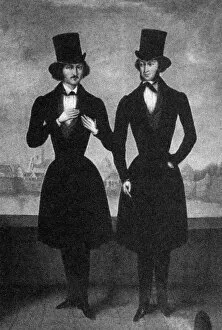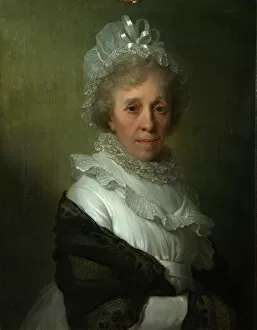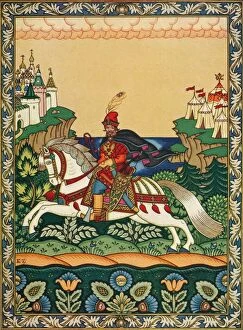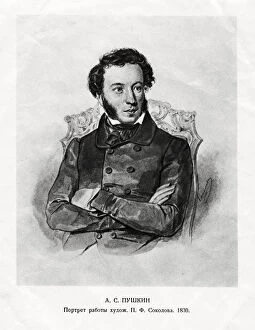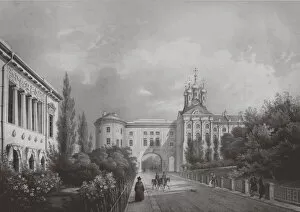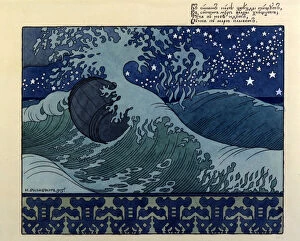Alexander Pushkin Collection (#3)
Alexander Pushkin, a renowned Russian poet and writer, left an indelible mark on the literary world. Born in 1799, his talent was evident from a young age
For sale as Licensed Images
Choose your image, Select your licence and Download the media
Alexander Pushkin, a renowned Russian poet and writer, left an indelible mark on the literary world. Born in 1799, his talent was evident from a young age. In the portrait of Alexander Alexandrovich Pushkin from 1833-1914, we catch a glimpse of his son's resemblance to him. The striking features and intense gaze suggest that creativity ran deep within their bloodline. Natalia Pushkina-Lanskaya, Alexander's wife, is depicted in another captivating portrait by Vladimir Ivanovich Hau. Painted between 1846-1849, this piece showcases her elegance and grace as she gazes off into the distance, and is clear that Natalia played an influential role in supporting her husband's artistic endeavors. Pushkinskie Gory holds great significance for admirers of Pushkin's work as it houses his final resting place at Svyatagorsky Monastery. This tranquil spot serves as a pilgrimage site for those seeking inspiration from the poet's legacy. The Alexander Pushkin House-Museum located in Moscow's Arbat-area offers visitors a chance to step into the world of this literary genius. Preserving artifacts and personal belongings, it allows us to delve deeper into his life and gain insight into his creative process. A monument dedicated to Alexander Pushkin stands tall in Tsarskoye Selo near Saint Petersburg—a testament to his enduring influence on Russian literature. This statue captures not only his physical likeness but also symbolizes the impact he had on shaping cultural identity. Costume designs created for "The Miserly Knight, " one of Pushkin's theatrical works, showcase intricate details that bring characters to life on stage. From l'usurier (the miser) to le baron avare (the stingy baron) and le jeune chevalier (the young knight), these costumes reflect both historical accuracy and dramatic flair.





